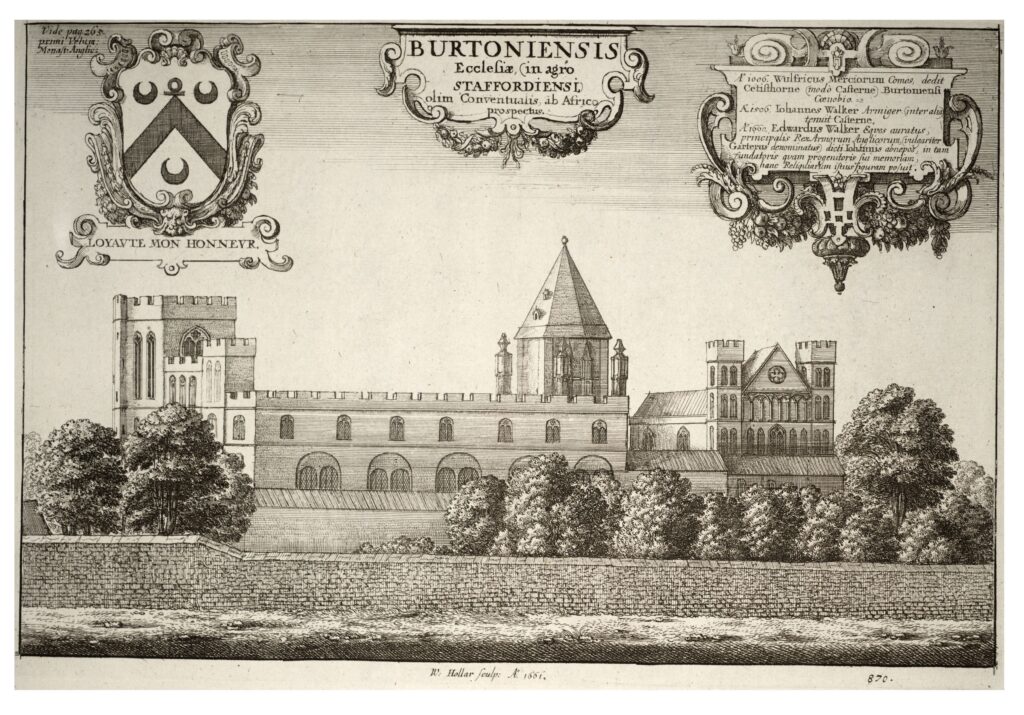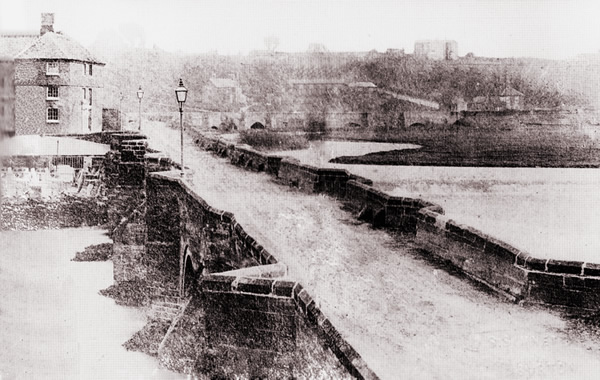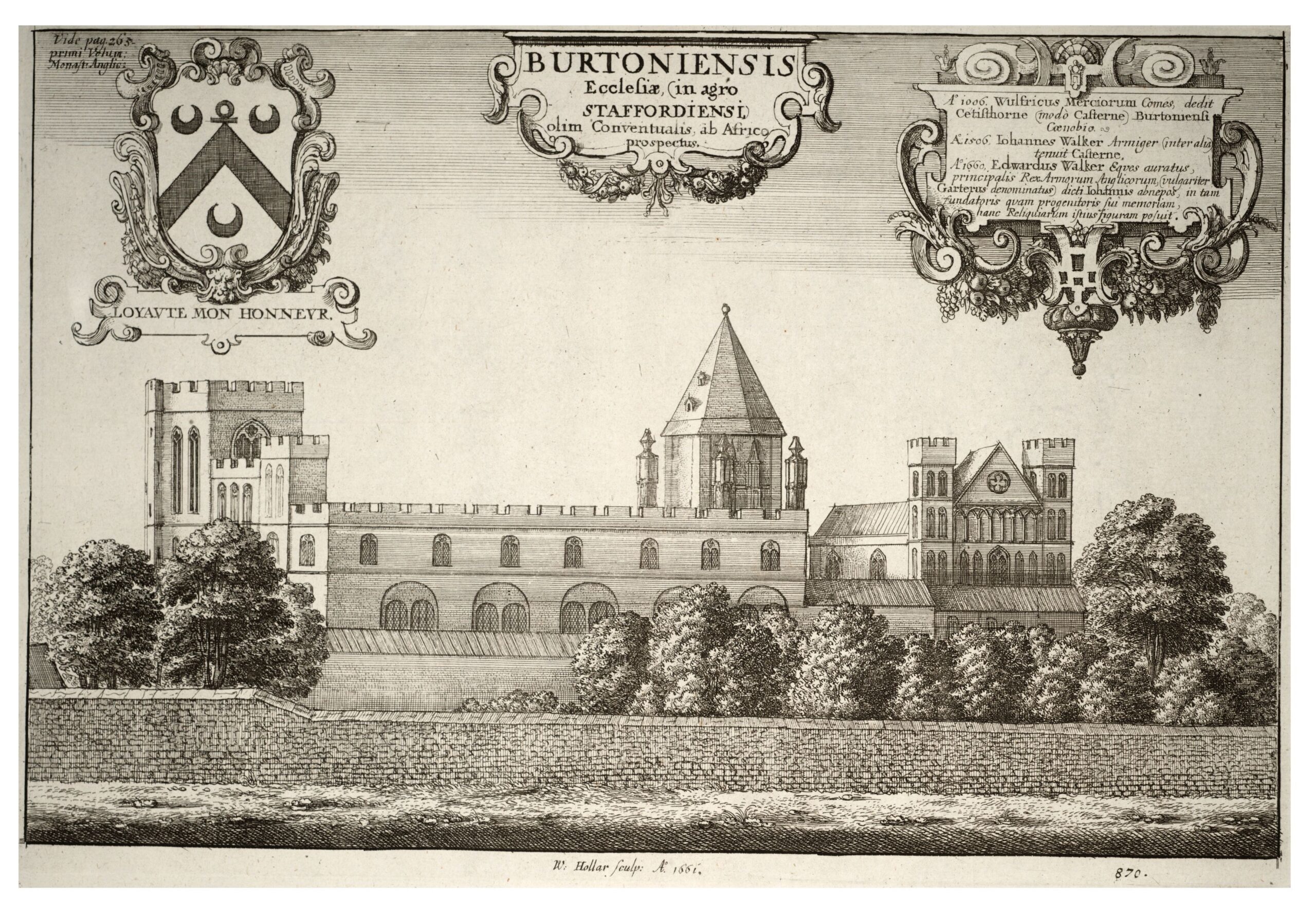The elevation of the number of monasteries and churches to borough status of towns marks an increasing prominence in the 12th century England. The new religious sites such as almshouses and infirmaries were constructed to care for the poor and sick. A great many abbots, monks, and lay-brothers found themselves at the favourable end of the urban boom the country was experiencing through the combination of religious, economic, and political changes. Burton’s history progresses with Duke William of Normandy’s decisive triumph over King Harold at the Battle of Hastings in 1066.
DOMESDAY BOOK
King William awarded his Norman clergy with lordships and landholdings. In particular, a chap called Henry de Ferrers was bestowed with 210 manors and lordships, 114 of which were in Derbyshire, 35 in Leicestershire and rest dispersed over 12 other counties including Staffordshire. Although Tutbury was the capital of his acres, Burton-on-Trent succeeded it.
The foremost thing, quite sensible too, upon taking the crown William did was to order for a map to be drawn of his current estate. He had a huge country at hand but still oblivious to its revenues. This was soon corrected with a survey to record all the autonomy, value, and ownership of lands governed by feudal order. Henry was appointed as the commissioner of Domesday in 1086 for Staffordshire. This was the first time in England’s history that a proper census was compiled.
Since the English Treasury was drained after the Battle of Hastings, and William needed the money to fortify castles, pay for soldiers’ wages, and raise warfare, more surveys were documented for tax assessment. It was also a way out to suppress quarrels breaking out over rightful ownership of various unclaimed lands for twenty years after the battle.
During the audit, Burton was still antiquated than most towns. Although the clerk mistakenly catalogued Burton as Stafford, it was still recorded to have an even smaller population than Stretton. Two other surveys were made in 1114 and 1116 to record the Burton abbey estates, but it now shows that nearly two-thirds of the households were omitted from recordings probably due to tax evasion.
The final count of the limited demesne land totalled to about 500 acres within the manor of Burton. On the manor, the Abbey also had ten oxen combined, one horse, 70 mares and foals, three Spanish asses, nineteen cows, one bull, eight heifers, and 128 pigs. The survey suggests that by the late 12th century, the fertile plains of demesne also grew wheat, barley, oats, rye, peas, beans, and vetch. Overall, the position of Burton by the River Trent provided for it whole and sole, making it self-sufficient in many ways throughout the years.

BATTLE OF BURTON BRIDGE (1322)
Throughout the medieval ages, the crown was faced with continuous uprisings by the aggressive barons who had a little too much wealth and power to throw around: King Edward II was no exception to such opposition. A man of royal birth, Thomas, inherited vast estates of his father Edmund Crouchback that included the earldom of Lancaster, Leicester, and Derby. Being the first cousin to Edward II, the lads got around pretty well. Thomas is also believed to have accompanied his cousin during the various campaigns undertaken as part of Edward I’s Scottish wars.

The two men grew apart when Thomas started siding with Edward’s enemies in support of Piers Gaveston’s exile, who was becoming a major source of the king’s mercy. Eventually, the enmity heightened as during the years 1314-1321, the rift continued to deepen between them and they often sought to turn others against each other. The net effect was a deadlock, which persistently weakened the harmony of England and finally, a civil war broke out dividing the country into two in 1321.
In March of 1322, their unabating war brought Thomas to Burton-upon-Trent in an attempt to block Edward’s forces on the Burton bridge. He was led to believe that this was the only crossing to River Trent. However, this was not the case as the royal forces found another crossing at Walton a few miles upstream. The Earl of Lancaster and his supporters flee to his castle at Pontefract from where the rebels further decided to take off to Northumberland.
This was short-lived because, on 16 March, they were intercepted at Boroughbridge by the advancing royal army and brought back to Pontefract for their execution. In the following year, King Edward granted the patronage of a church in Tatenhill to Burton Abbey in honour of the victory over his opposers at the town.
THE ECONOMY
The start of the 13th century was a crucial turning point for the Burtonian. In 1201, upon the discovery of St. Modwen’s relics, people from all over the country flocked to Burton to pay their respects to the legendary abbess. On 12th April 1200, King John awarded the abbey town to hold a weekly market, followed by borough status in 1204. The prosperity of the parish led to the settlements along the banks of the River Trent with properties sold on High street, Horninglow street, and Bond end (part of Burton Extra).
In the later 13th century, cloth trade became predominant in the town. This commerce provided an excellent opportunity for locals to take part and to develop a lucrative system of trade, whereby wool was sent to the Florentine markets. Burton abbey became the major distributors of cloth in Staffordshire along with Croxden abbey. It is also reported that in the 1340s, the abbey had to acquire a fulling mill on Trent to keep up with the demands in the cloth markets. However, in the 16th century, Burton like other towns suffered a decline in the economy. The compared rentals reveal that numerous houses, shops, and cottages in the town in 1546 were found to be destroyed, and about a sixth of the properties were abandoned.
In a devout phase of its history, the monastic foundation and transforming architecture helped kick-start and lent momentum to the abbey’s success. Whether the activities of the abbey and its abbots proved to be beneficial or a burden upon the convent in the following years is a mystery for another time. Look out for more information on this page!





